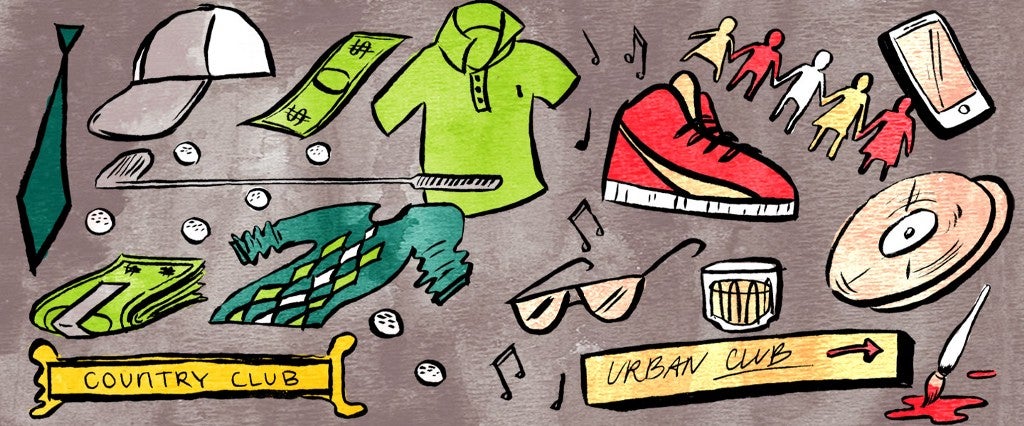This week the Soho House Malibu—with its 10,000 square feet of teak wood decks, floating staircases, bars, dining rooms and plush seating with views of the Channel Islands—will make its debut.
Excited?
Don’t be. Chances are you won’t ever be allowed inside.
It can take years, rigorous screening, thousands of dollars and the right cultural cachet to get a membership card to clubs like the Soho House. In fact, not even current members of the Soho House in nearby West Hollywood are allowed into the new Malibu annex. They have to re-apply. Save your pity, though: For anyone in the right tax bracket, there have never been more options for membership in exclusive private clubs.
Last fall the NeueHouse opened in Hollywood; it bills itself “as a platform for success.” The high-end co-working space includes a rooftop deck, a SONOS listening room and a performance space. Down the street from Soho House’s flagship annex in West Hollywood, a new rival is setting up shop. The Arts Club, which boasts Gwyneth Paltrow as an investor, is readying construction on a nine-story postmodernist tower, which will offer a spa, a gym and a rooftop pool. Sensing this new competition, the Soho House — backed by billionaire Ron Burkle — is expanding not only to Malibu but also to downtown’s Arts District, as well as to new locations globally, including Barcelona and Mumbai. Worldwide, there are now more than 40,000 card-carrying Soho House members.
This cordoning off of elites is nothing new. In many ways, the urban club renaissance mirrors the country club boom of the early 19th century. But what has changed is the members, in terms of what they do when they’re working as well as when they’re at leisure.
Whereas the WASP country club culture drew largely from the fields of law, finance and real estate, the new breed of club draws from the arts, fashion, entertainment and other creative industries. Standards for admittance can be just as exacting as at traditional country clubs, albeit determined more by coolness factor than family pedigree. In 2010, after complaints were lodged that the place was starting to feel too “corporate,” the Soho House in New York purged 500 of its members.
But perhaps the biggest difference are the desired pursuits of the urban clubs’ members—namely eating and relaxing, or at most, using the gym. By contrast, country clubs were primarily hubs for sport and golf. The latter is “not nearly as popular as it once was,” according to James Mayo, author of The American Country Club: Its Origins and Development. Participation in golf has dropped by about 20 percent in roughly the past decade. Golf facilities, too, have steadily closed down since the late 1990s, according to the National Golf Foundation. “But people are still interested in private clubs, so it has metamorphosed into a different format,” Mayo says.
Part of that new format involves the clubs’ location. Country clubs became popular in cities like New York and Boston in the early 1900s, when elites sought sanctuary in the countryside from the increasingly polluted industrial core. Today, wealthy Americans are largely clustered in cities, and they want their exclusive social spaces closer to home.
While country clubs valued lineages and local philanthropy, applicants to new urban social clubs are encouraged to play up their creative side. They are well-advised to cite their most culturally relevant friends as references— that is, assuming they can get off the waiting list, which may take years. As far as dress codes, Soho House discourages suits in favor of a more casually chic approach. The cost of joining the Soho House — which has annual fees of around $2,500 — is trivial compared to high-end country clubs, where initiation fees alone can easily climb into five figures. It’s no longer just about the thickness of your pocketbook.
“We imposed a value system on a community that celebrates financial success over morality,” Tim Geary, the former membership director of the Soho House recently told the Hollywood Reporter. (Geary is now the global membership director of NeueHouse.) “The very worst people, it mattered tremendously to them, which doubled our satisfaction in rejecting them,” he said.
In this regard, the urban club is the anti-country club, shutting out the ultra-wealthy so that the slightly less wealthy but cooler can mingle in peace. “You are talking about wealth, but a different kind of wealth. It’s wealth of knowledge,” Mayo says.
“The connection between country clubs and places like the Soho House is that they are both an extension of the home and yet still offer something more,” says Richard Moss, a historian who has written about the cultural history of golf and American country clubs. “There is a line drawn around these places and only people you can abide can get in. Country clubs have always been that way. This allows members to expand their identity and have a place where the rules of behavior and appropriateness are considerably different than at home, work or a formal setting.”
In other words, people let loose after a few drinks and some lightly structured social activities, and make connections in new ways. For the old country club elite, that looked like closing a deal over martinis in the trophy room; for the new urban clubs, it’s more like landing a chat with a literary agent after a Malcolm Gladwell book signing.
For everyone else, not much has changed: We’re all standing in the same spot, sneaking a peek from beyond the velvet rope.
Peter Kiefer is a Los Angeles-based writer. He previously wrote about dog names going human for MEL.
